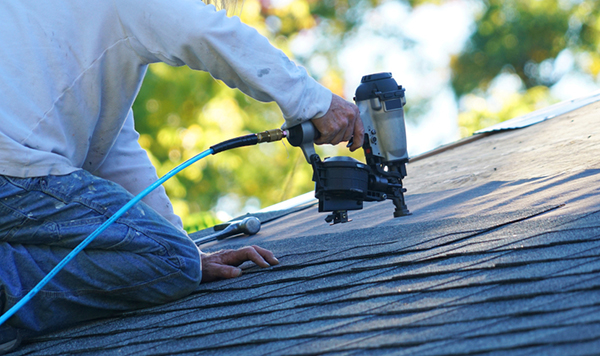Common Roofing Mistakes Homeowners Make and How to Avoid Them
Author: Lee Polevoi | July 31, 2023
Few homeowners are experts in roof repair, so they sometimes make common roofing mistakes that can (and should be) avoided. Some errors are obvious. For example, it's never wise to drill a hole in the roof or nail new shingles directly on top of old ones. But what about other bad roof care habits? Here's a look at some errors committed by well-meaning homeowners and how to avoid them.

Neglecting to Clean the Roof and Gutters
It doesn't take long for a roof to accumulate dirt, leaves and other debris. Many homeowners neglect to address this problem, which may contribute to leaks and damage down the road. A roof that is clogged with debris can grow mold and fungus that wears shingles away and rots decking. If your gutters are full, your home can also develop ice dams, where snow melts and freezes in a ridge near the edge of the roof, allowing water to back up behind it and leak into your home.
Most roofing contractors suggest that homeowners arrange for professional roof cleaning services every two to three years. Keep an eye out for drifts of dirt or plant material, and clean your gutters at least once a year if you can do it safely.
DIY Shingle Repairs
Homeowners may think they can patch a shingle roof, but it's easy to make costly mistakes without a contractor's level of experience. If the nails are an incorrect size (for example, too small for adequate fastening), shingles can become loose and shift, hastening the need for large-scale repair and replacement.
Improperly placed nails are sometimes exposed to damage from wind, moisture and sunshine, which leads to rust and corrosion. It's important that every nail is set underneath the top layer of shingles. A contractor will not only have the nail guns and know-how to properly patch a roof, but they'll also have the proper fall protection and other safety equipment and know-how to use it.
Holding on to Old Flashing
Metal flashing on a roof is designed to halt the spread of moisture into the house around areas such as skylights and chimneys. Sometimes, old flashing may appear to be intact enough that roofing contractors are tempted (or asked by frugal homeowners) to reuse it as part of an overall roof replacement project.
However, weakened flashing can lead to leakage and moisture problems later on. If you're not sure whether it will hold up for another decade or more, always replace old flashing with new.
Using the Wrong Roof Coating
If the roof on your home is not made of a flat membrane such as EPDM, you probably don't need any kind of roof coating. However, some homeowners still decide to opt for roof coating instead of roof replacement. Others choose reflective cool-roof coatings that reduce energy use.
However, an incorrect roof coating can lead to big problems:
- Coating that's applied too thinly can fail to protect the roof as designed.
- Coating that's too thick may cause wrinkles or blisters.
- Coating applied at the wrong time, such as just before a rainstorm, may simply wash off the roof.
- Using acrylic coating on a roof that already has a standing water issue may cause the coating to peel off in big sheets.
Always discuss your options with a roofing contractor before making any changes to your roofing materials.
Choosing the Wrong Roof Design
Not all roof designs are ideal for every climate. For example, gable roofing often experiences significant damage in areas of the country where high winds are common. Flat roofs, while an attractive and cost-effective option, are also likely to experience water damage more easily than other designs. A flat roof should not be your first choice if you live in a region prone to heavy rain and snowfall.
Homeowners should consult a professional roofing contractor to avoid common roofing mistakes. By partnering with a pro, you can be sure your roofing project will last for years to come.